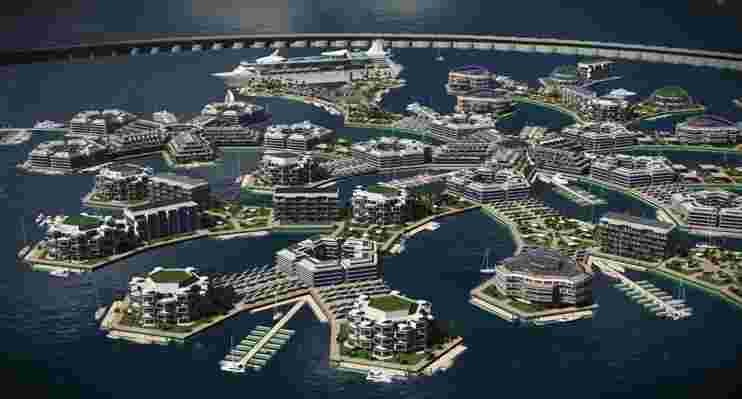Real estate in coastal cities tends to be expensive, due in large part to their proximity to water (and thus, harbor and commerce) and the beautiful views their locations allow . In Manhattan, for example, the 2015 median price per square foot was $1,416, while Santa Monica was $1,006. But what if we could live in an apartment that was built upon floating concrete slabs nearby, while paying just $500 per square foot? That’s the idea behind the Floating City Project, a proposal by the Seasteading Institute.
For five years, the Seasteading Institute—a global organization that includes marine biologists, nautical engineers, aquaculture farmers, and maritime attorneys—has been conducting research into the potential for innovative permanent communities that would float on 165-by-165-foot concrete slabs. The group’s plan—which is being backed by Peter Thiel, the cofounder of PayPal—is to partner with coastal nations and use their shallow waters as sites for massive floating structures that give potential residents access to mainlands.

A closer view of the buildings that would make up the cities.
The institute has been working with Dutch aquatic engineering firm DeltaSync to design the cities, which would be built upon interconnecting concrete slabs that are molded in the shape of a square or a pentagon (each slab with an estimated cost of $15 million). The designers selected concrete as a base for its price and durability (each floating block is projected to last for over a century). The platforms would include apartments, offices, and hotels, and no building would be taller than three stories. One fifth of the area in each metropolis would be strictly reserved as green space for residents, and the designers plan to use renewable energy, such as solar panels , to run the island’s electricity grid. The cost for each city would be approximately $167 million.
The Seasteading Institute believes its floating cities could provide tourism opportunities, and help provide water and energy to the host nation that opens up its waters to them. The organization predicts that the world’s first floating city could be established by 2020.
